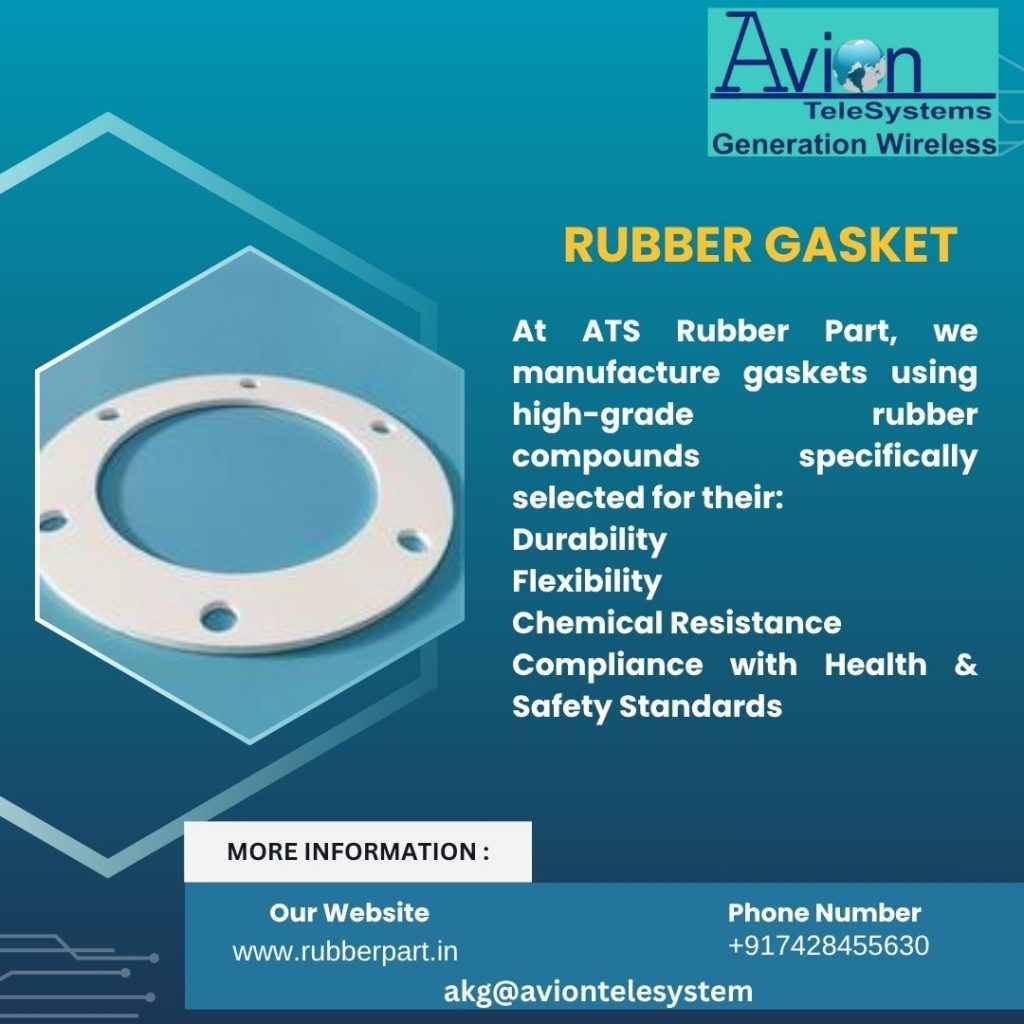In the world of engineering and manufacturing, some components may be small in size, but they play a massive role in ensuring safety, reliability, and efficiency. Rubber gaskets are one such unsung hero. Found in everything from pipelines and engines to medical devices and water purifiers, these seemingly simple components are at the heart of sealing solutions across industries.
In this blog, we peel back the layers and take a closer look at the technology, materials, and innovations that make rubber gaskets vital to modern systems.
What Is a Rubber Gasket?
At its core, a rubber gasket is a mechanical seal that fills the space between two or more mating surfaces to prevent leaks of gases or fluids. These gaskets are designed to withstand pressure, temperature changes, and chemical exposure—all while maintaining their sealing integrity.
The Science Behind the Seal
The effectiveness of a gasket relies on several key properties:
- Compression and Recovery: A rubber gasket must compress under pressure to create a tight seal, but it should also recover its shape when the pressure is released.
- Chemical Resistance: Gaskets need to withstand exposure to oils, solvents, water, or other chemicals, depending on the application.
- Temperature Tolerance: From sub-zero conditions to high-heat industrial environments, gaskets must maintain performance without degrading.
Popular Rubber Materials Used in Gasket Manufacturing
The choice of material impacts a gasket’s performance and lifespan. Some commonly used rubber compounds include:
- Nitrile (NBR): Ideal for oil and fuel resistance.
- EPDM: Great for water, steam, and outdoor environments.
- Silicone: Excellent for high-temperature and food-grade applications.
- Viton (FKM): Known for superior chemical and heat resistance.
- Neoprene: Offers a good balance of flexibility, durability, and moderate chemical resistance.
Applications Across Industries
Rubber gaskets are used in virtually every industry:
- Automotive: Engine components, exhaust systems, and fuel systems.
- Water Filtration: Ensuring leak-proof seals in purifiers and filtration units.
- Pharmaceutical & Medical: Cleanroom environments and equipment sealing.
- Food & Beverage: Sanitary-grade gaskets for processing equipment.
- Industrial & Manufacturing: Pumps, valves, and heavy machinery.
Technological Advancements in Gasket DesignToday’s gaskets are not just cut from sheets—they are precision-engineered using advanced technologies like:
- CNC Cutting & Laser Profiling: For complex and custom gasket shapes.
- Molding & Extrusion: Ensuring uniformity and better performance.
- Digital Design & Simulation: Optimizing gasket geometry for better sealing and longevity.
Why Quality Matters
A poor-quality gasket can lead to leaks, equipment failure, and safety hazards. That’s why sourcing from a trusted manufacturer ensures:
- Accurate sizing
- Superior material composition
- Tested performance under real-world conditions
Conclusion: The Small Part with a Big Impact
Rubber gaskets may seem simple, but their design and functionality are backed by material science, precision engineering, and innovation. Whether it’s a car engine or a water filtration system, the seal behind the system is what keeps everything running smoothly.
Behind every successful seal, there’s a well-engineered rubber gasket.
Would you like this customized for a specific company like ATS.Rubberpart or tailored to an industry-specific use?
Get in Touch
📞 Phone: +91 7428455630
📧 Email: akg@aviontelesystems.com
🌐 Website: www.rubberpart.in

